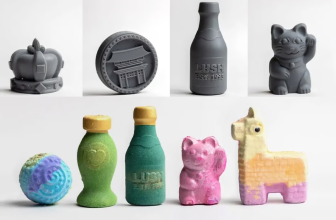The Future of Sustainability: How to Recycle Filament in 3D Printing

The 3D printing industry has brought about an unprecedented wave of innovation and creativity. Yet, with the rapidly growing popularity of this technology, the industry faces an increasingly important challenge: waste management. Recycling filament, especially the widely used PLA (Polylactic Acid) filament, is becoming vital. We’ll explore how to recycle filament, with an emphasis on recycle PLA filament, and why it is essential for a sustainable future.
The surge in 3D printing activities has led to a rise in the consumption of filament materials, making the question of how to responsibly handle waste more critical than ever before. By focusing on recycling filament, especially recycling PLA filament, the industry can take a substantial step toward a greener future, reducing the overall environmental impact. Implementing practices to recycle filament not only fosters ethical manufacturing but also paves the way for a new era of creativity and cost efficiency, empowering users to experiment and innovate while minimizing waste.
Introduction to Filament Recycling
Recycling filament in 3D printing is the process of taking used or failed print materials, breaking them down, and then repurposing them to create new filament. It’s a way to minimize waste, reduce costs, and promote environmental responsibility within the industry.The recycling of filament, particularly recycle PLA filament, aligns with broader global sustainability efforts and makes 3D printing more environmentally friendly.
Filament recycling also opens doors to creativity by allowing users to blend different types of recycled materials, giving rise to unique properties and characteristics in the new filament. Moreover, this recycling process helps in circulating resources within the community, potentially leading to a self-sustaining ecosystem in 3D printing where waste is continually minimized and repurposed.
Why Recycle Filament?
Environmental Impact: Traditional filament production can consume significant resources and energy. Recycling filament helps to reduce the environmental footprint.
Cost-Effectiveness: By learning how to recycle PLA filament and other types, you can save on material costs, making 3D printing more affordable.
Innovation and Customization: Recycling allows for experimentation with materials, giving users the ability to create custom filament blends.
Step-by-Step Guide to Recycling PLA Filament
PLA is one of the most popular materials used in 3D printing due to its biodegradable nature. However, recycling PLA filament requires specific steps:
- Collection and Cleaning: Gather the used or failed PLA prints. Clean them thoroughly to remove any contaminants, such as support material or adhesives.
Challenges in Recycling PLA Filament
- Quality Concerns: The recycled filament might not have the same quality as the original. Regular testing and quality control can mitigate this issue.

Conclusion on Recycling Filament
Recycling filament, particularly recycling PLA filament, is an essential aspect of the 3D printing industry’s future sustainability. It not only aligns with global environmental goals but also fosters innovation and cost-saving opportunities. Learning how to recycle PLA filament and other types is not just a trend but a necessity. It demands collaboration, investment in technology, and adherence to quality standards. The future of 3D printing is promising, and with concerted efforts in filament recycling, it can be a future that thrives on responsible stewardship of resources and continuous innovation. The call to recycle filament is a call to action for the entire 3D printing community, one that resonates with the broader goals of sustainability and ecological responsibility.
Recycling filament also opens doors for small businesses and individual enthusiasts, as it can make 3D printing more accessible and affordable. By encouraging recycling practices within the 3D printing industry, we’re not only preserving natural resources but also fostering a circular economy that can thrive for generations to come. Furthermore, it can lead to the development of new materials and processes, which may revolutionize the way we approach design, manufacturing, and waste management, reinforcing the industry’s commitment to sustainability.





